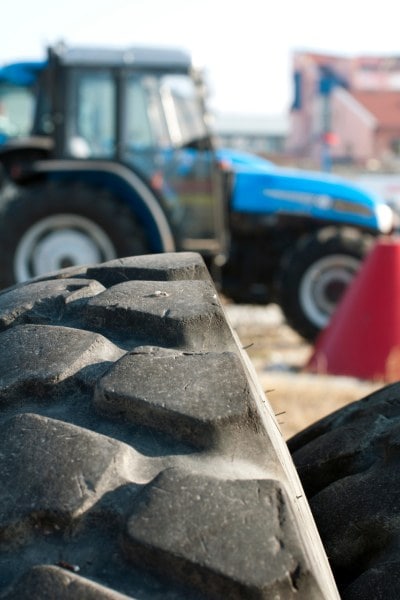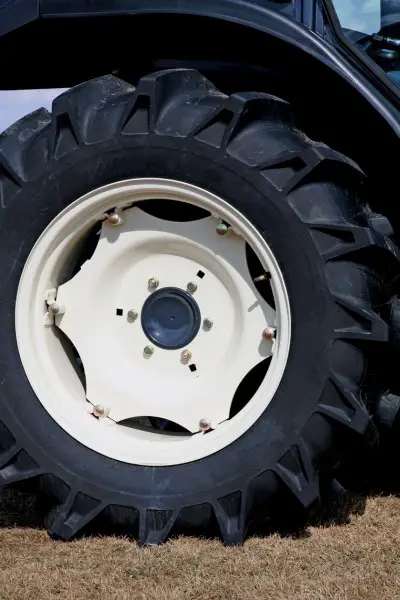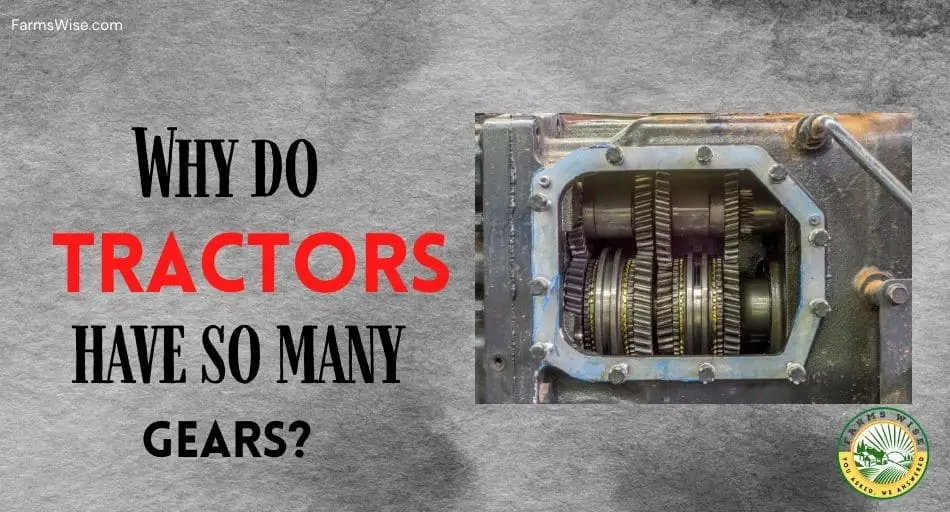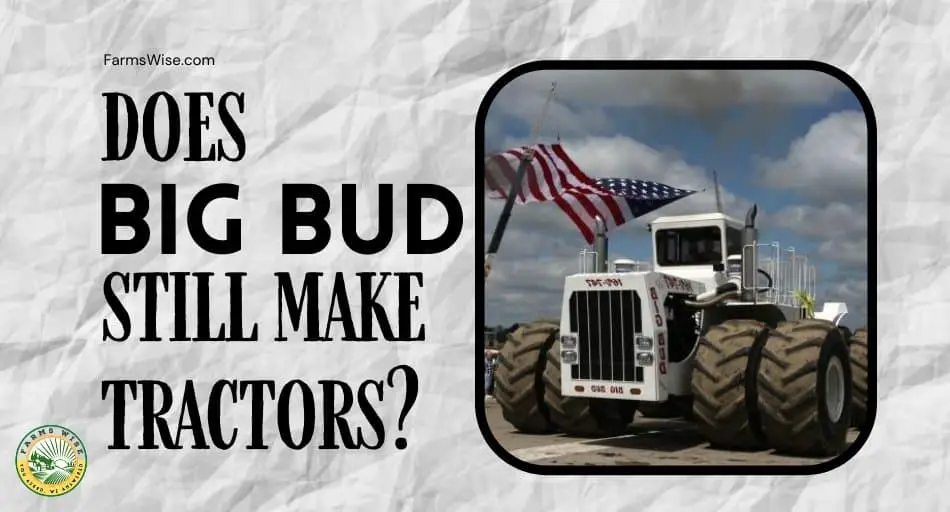Tractors are an essential part of agriculture, and their tires play a crucial role in their performance. The right size and type of tire can make all the difference in the efficiency and productivity of a tractor.
Measuring tractor tires is not as simple as measuring car tires. Different measurements are required for other tire parts, such as the width, diameter, and circumference.
There are various methods for measuring tractor tires, and it is essential to measure them accurately to ensure that the right tire is selected for the tractor. Using a string is the most common way to measure the tire’s circumference.
By wrapping a string around the tire and measuring the length of the string, the tire’s circumference can be determined, which is necessary to select the appropriate tire size.
Additionally, measuring the width of the tire rim is vital to ensure the tire fits correctly.
Understanding how to measure tractor tires is crucial for farmers and owners to ensure that their tractors perform at their best.
By selecting the right tire size and type, farmers can increase their productivity and efficiency while reducing the risk of damage to their equipment. In the following sections, we will explore the various methods for measuring tractor tires and the importance of selecting the correct tire size and type.
Measuring Tractor Tires

Measuring tractor tires is essential when it comes to replacing or upgrading them. Measuring tractor tires is relatively simple and involves measuring tire width, aspect ratio, and rim diameter. Here’s a breakdown of how to measure tractor tires:
Section 3.1: Measuring Tire Width
The tire width is the distance between the two widest points of the tire. To measure the tire width, use a ruler or measuring tape and measure from one sidewall to the other.
Record the measurement in inches or millimeters, depending on the tire size format. Standard tire sizes are usually measured in inches, while metric tire sizes are measured in millimeters.
For example, if you measure a tire width of 20.8 inches, that means the tire is 20.8 inches wide.
Section 3.2: Measuring Aspect Ratio
The aspect ratio is the tire sidewall height expressed as a percentage of the tire width. To measure the aspect ratio, divide the height of the tire sidewall by the tire width, then multiply by 100.
For example, if you measure a tire sidewall height of 10 inches and a tire width of 20.8 inches, the aspect ratio would be (10/20.8) x 100 = 48.08%.
Section 3.3: Measuring Rim Diameter
The rim diameter is the distance across the center of the wheel where the tire sits. To measure the rim diameter, measure the distance between the two opposite bead seats (the inner edges of the rim where the tire sits).
Record the measurement in inches or millimeters, depending on the tire size format.
For example, measuring a rim diameter of 42 inches means the tire fits a 42-inch diameter wheel.
Measuring tractor tires accurately is crucial to ensure you get the right size tire for your equipment. By measuring tire width, aspect ratio, and rim diameter, you can find the perfect fit for your tractor.
Tips for Accurate Tire Measurement

Measuring your tractor tires accurately is important to ensure you get the correct replacement tires. Here are some tips to help you measure your tractor tires accurately:
Section 4.1: Choosing the Right Measuring Tool
Before you start measuring your tractor tires, you need to ensure you have the right measuring tool. A tape measure or ruler is the most commonly used tool for measuring tire size.
However, for more accurate measurements, consider using a specialized tire measuring tool.
These tools accurately measure the tire’s width, height, and diameter. They are also useful for measuring the distance between the center of the wheel and the bolt holes.
This measurement is important when selecting new rims for your tractor tires.
Section 4.2: Measuring the Tire Correctly
When measuring your tractor tires, it’s important to accurately measure the tire’s width, height, and diameter. To measure the width, place the tape measure across the widest part of the tire’s tread.
For the height, measure from the ground to the highest point of the tire.
To measure the diameter, measure across the center of the tire from one side to the other.
It’s important to note that you should measure the tire when it’s not mounted on the rim. This will give you a more accurate measurement.
If you measure the tire when it’s mounted, the weight of the tractor can compress the tire, giving you a false measurement.
Section 4.3: Measuring the Tires When They Are Mounted
Measuring your tractor tires when they are mounted can be tricky. However, it’s sometimes necessary to get an accurate measurement, especially if you’re measuring the distance between the center of the wheel and the bolt holes. In this case, you will need to use a specialized measuring tool.
A rim gauge is one tool that can help you measure your tires when mounted. This tool is designed to measure the distance between the center of the wheel and the bolt holes accurately.
It’s important to note that you should measure the distance between the bolt holes in a star pattern, not in a straight line.
By following these tips, you can ensure that you measure your tractor tires accurately. This will help you select the right replacement tires and keep your tractor running smoothly.
Understanding Tractor Tire Sizes

Understanding tractor tire sizes is essential for finding the right replacement tire. Tractor tire sizes are expressed in a standard format that includes tire width, aspect ratio, rim diameter, load index, and speed rating.
Each of these factors plays a role in determining the tire size that will fit your tractor.
Section 2.1: Tire Width
The tire width is expressed in millimeters or inches and is measured from one sidewall to another. For example, a tire with a width of 380 mm means that the tire is 380 millimeters wide from one sidewall to the other.
Section 2.2: Aspect Ratio
The aspect ratio is the height of the tire’s sidewall expressed as a percentage of the tire’s width. For example, a tire with an aspect ratio of 70 has a sidewall height that is 70% of the tire’s width.
Section 2.3: Rim Diameter
The rim diameter is the measurement of the rim from one side to the other, expressed in inches. For example, a tire with a rim diameter of 24 inches requires a rim that is 24 inches in diameter.
Section 2.4: Load Index
A load index is a number that indicates the maximum load that the tire can carry when inflated to its maximum pressure.
The load index is expressed in pounds and can be found on the tire sidewall. For example, a tire with a load index of 120 can carry a maximum load of 3,086 pounds when inflated to its maximum pressure.
Section 2.5: Speed Rating
The speed rating is a letter that indicates the maximum speed that the tire can safely handle when carrying its full load.
The speed rating is expressed as a letter and can be found on the tire sidewall. For example, a tire with an H speed rating can safely handle speeds up to 130 mph.

Jack is the owner, chief editor, and senior writer of this website.
Machinery, engines, and farming have always been a passion of his since he was a young boy. Growing up on a small farm in rural America, he learned the value of hard work and dedication from an early age.
After completing his degree in Engineering, he decided to follow his dream and became a farmer in 2009.
Since then, he has gained a wealth of knowledge and experience in the field. He has grown a variety of crops, tended to farm animals, and worked with all sorts of farming machinery. Continue reading…





